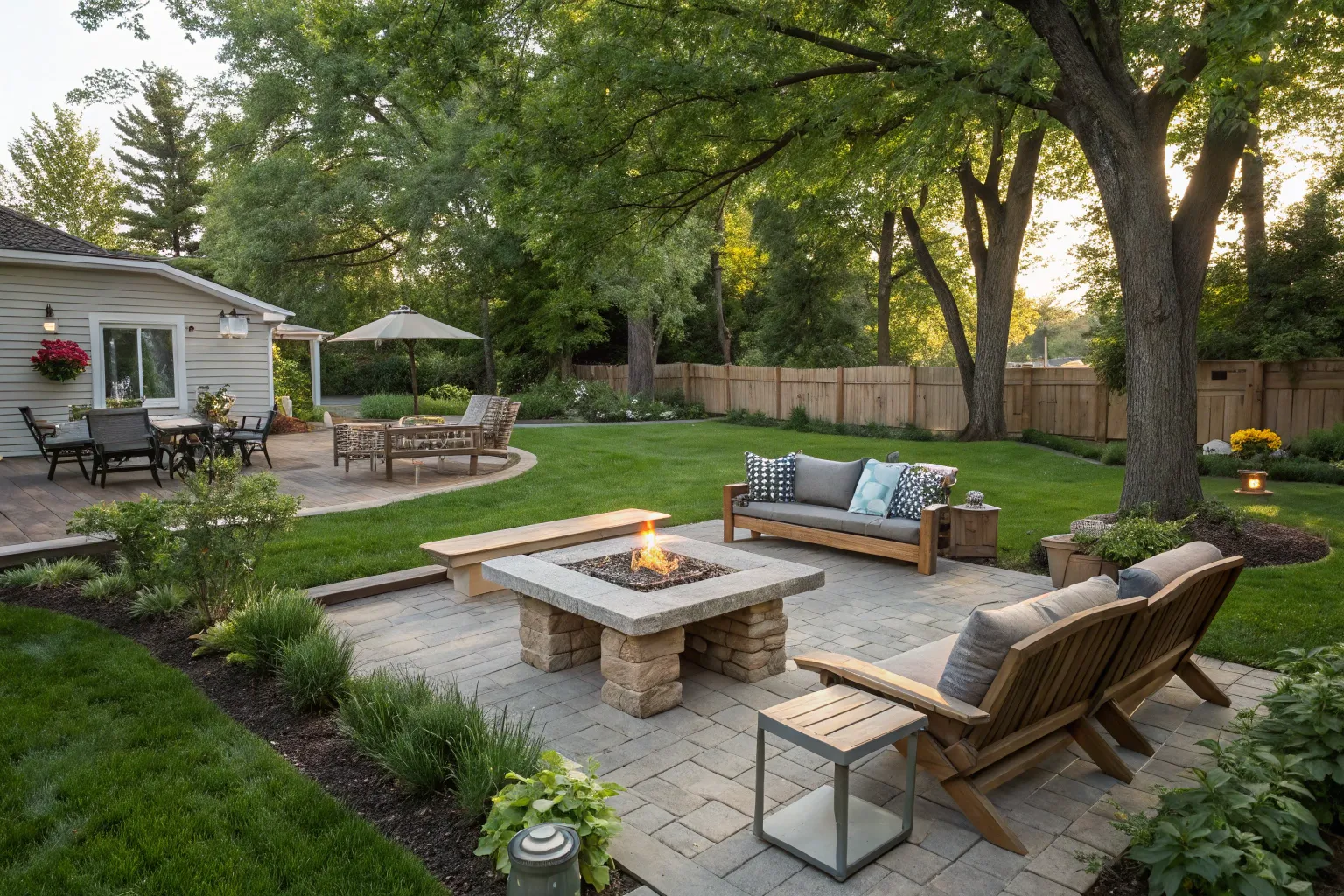Creating engaging outdoor spaces for teenagers requires more than just installing a few benches and calling it done. When we truly understand adolescent psychology and honor their need for independence, we can design environments that become genuine extensions of their identity and social world.
Understanding Teen Psychology in Outdoor Spaces
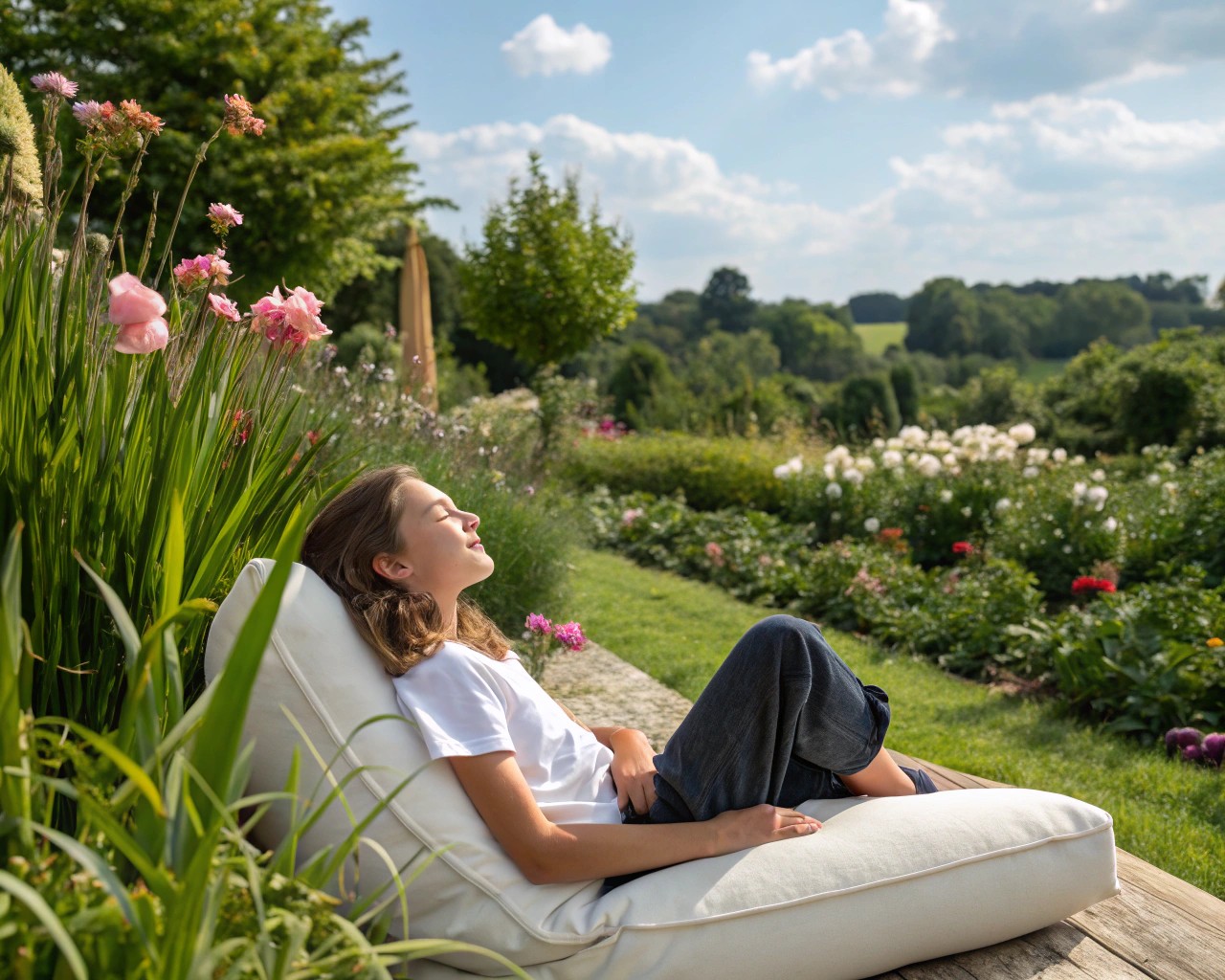
The Science of Nature’s Impact on Adolescent Development
Research consistently demonstrates that outdoor environments significantly reduce stress hormones like cortisol while boosting mood-enhancing neurotransmitters including serotonin and dopamine. For teenagers navigating academic pressures, social complexities, and identity formation, these neurochemical benefits are particularly profound. Nature exposure has been shown to improve concentration, reduce anxiety and depression symptoms, and enhance creativity—all crucial for healthy adolescent development.
The therapeutic qualities of outdoor spaces extend beyond mere biochemical responses. Spending time in nature provides what researchers call “soft fascination”—a gentle engagement that allows the prefrontal cortex to restore itself after mental fatigue. This restoration process is especially valuable for teenagers whose developing brains are constantly processing new information and social dynamics.
Privacy, Autonomy, and Spatial Ownership
Privacy stands as the cornerstone of teen-friendly outdoor design. Unlike younger children who thrive under watchful supervision, teenagers require spaces where they can retreat from adult oversight while remaining within safe boundaries. This need for privacy isn’t defiance—it’s a fundamental requirement for healthy identity development and peer relationship building.
Research from participatory design studies reveals that teens demonstrate significantly greater investment in spaces they’ve helped create. When given authentic involvement in planning and construction, teenagers develop what researchers term “collective efficacy”—a confidence in their ability to improve their environment. This sense of ownership transforms outdoor spaces from mere amenities into meaningful extensions of their personal identity.
Social Dynamics and Peer Interaction in Garden Settings
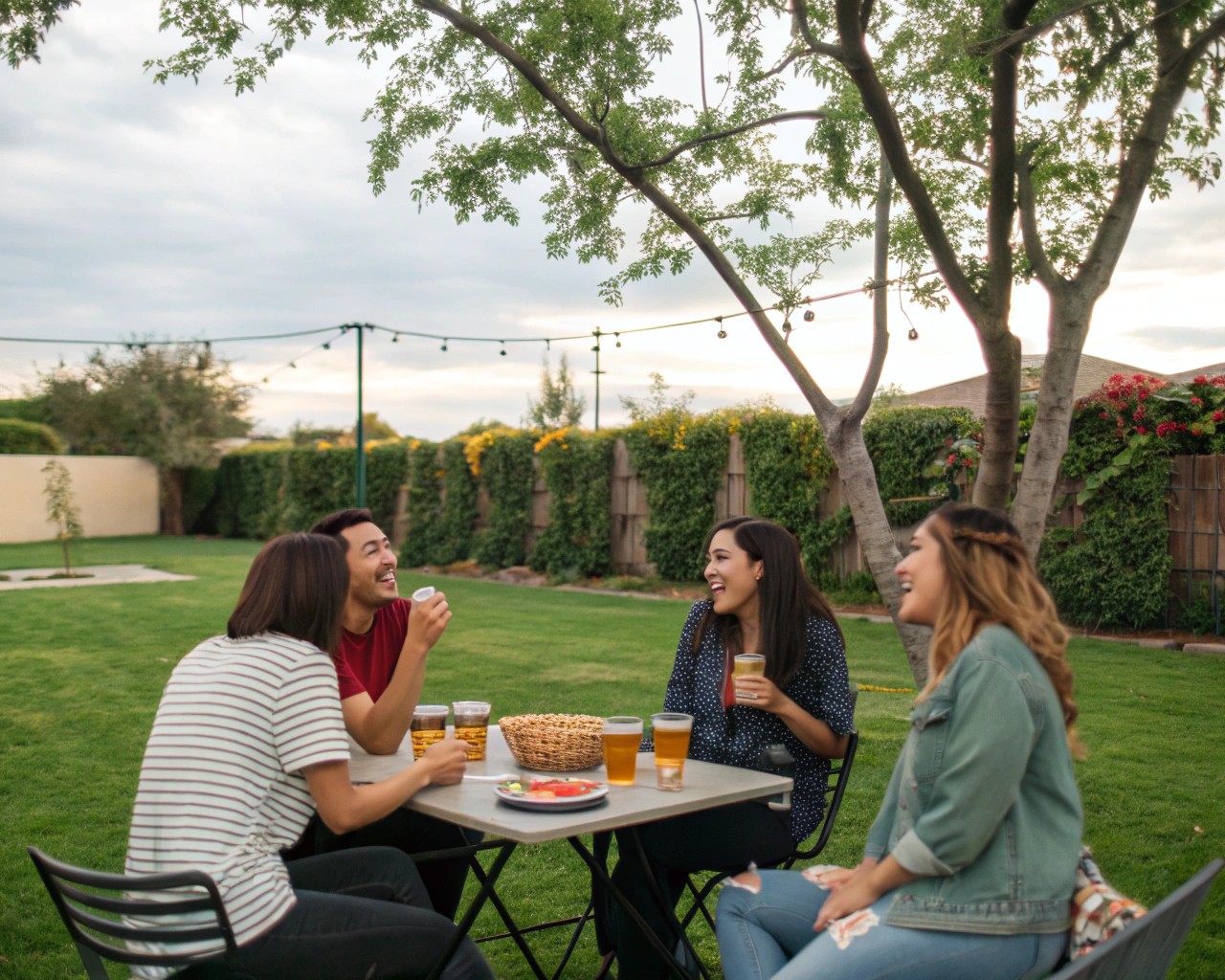
Outdoor environments naturally facilitate the type of informal social interaction that teenagers crave. Unlike structured indoor activities, garden spaces allow for fluid group dynamics where conversations can flow organically and friend groups can merge or separate as needed. The key lies in creating multiple micro-environments within the larger space—areas where intimate conversations can occur alongside more boisterous group activities.
Core Design Principles
Flexibility and Multi-Functionality
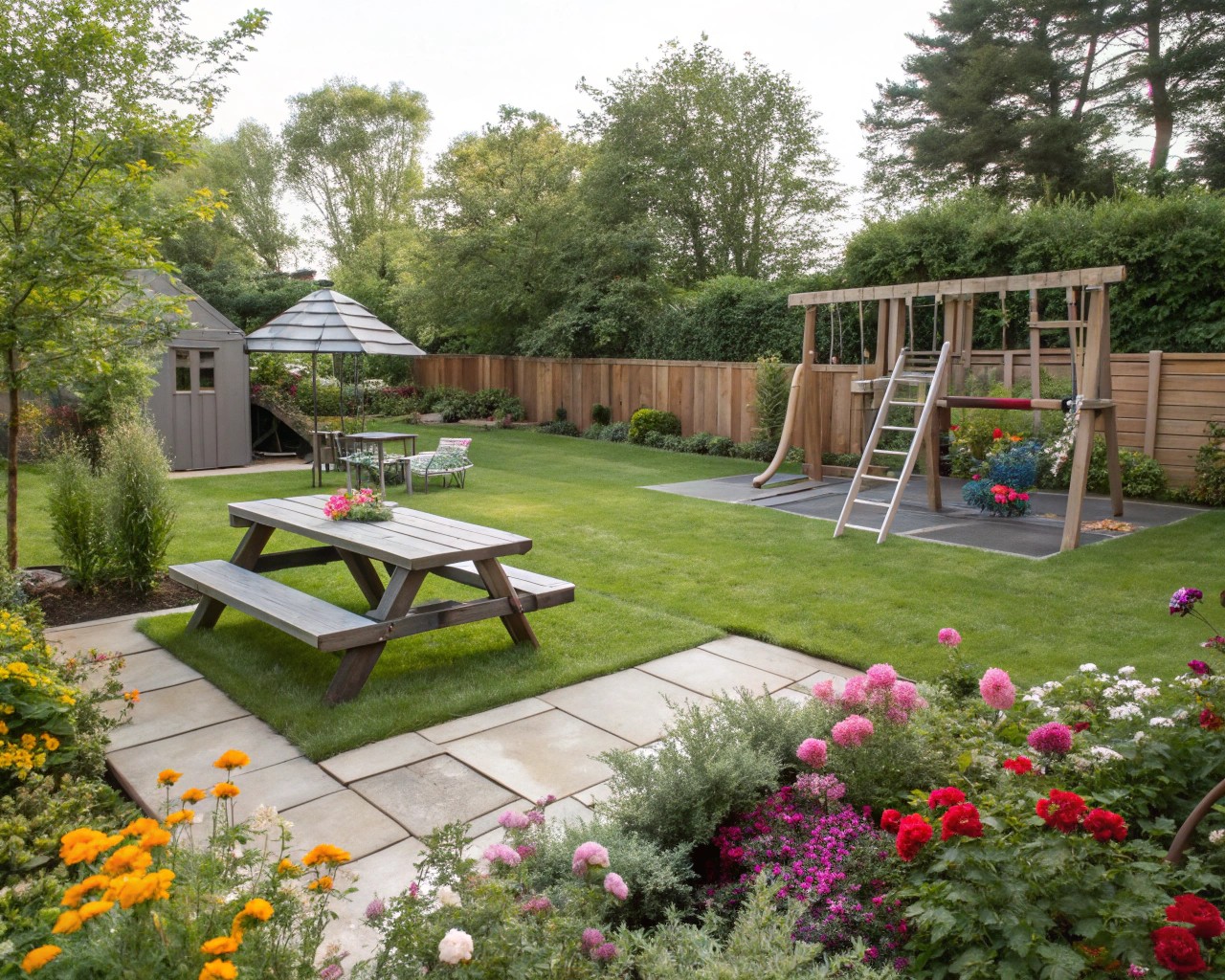
Teenagers’ needs shift rapidly, and successful outdoor spaces must accommodate this dynamism. Rather than designing fixed-purpose areas, focus on creating adaptable zones that can serve multiple functions throughout the day and across seasons. A raised platform might host morning yoga sessions, afternoon study groups, and evening social gatherings—all with simple furniture rearrangements.
Modular seating solutions prove particularly effective in teen spaces. Weather-resistant sectionals that can be reconfigured, lightweight chairs that stack for storage, and multi-level surfaces that accommodate different postures and activities all contribute to spatial flexibility. I’ve observed that teens instinctively rearrange furniture to suit their immediate needs, so designing with this behavior in mind prevents frustration and damage.
Zoning for Different Activities
Effective teen outdoor spaces incorporate distinct zones that serve various emotional and social needs:
Social Zones: These areas accommodate group gatherings and require durable, comfortable seating arranged to encourage conversation. Fire pits, outdoor kitchenettes, or simple BBQ areas add functionality while creating natural gathering points.
Quiet Retreat Spaces: Essential for emotional regulation and solitary activities, these zones benefit from natural screening through strategic plantings or decorative panels. The goal is perceived privacy rather than complete isolation.
Activity Areas: Open spaces for games, sports, or creative projects allow teens to engage in physical activity and collaborative endeavors. These areas should be flexible enough to accommodate everything from casual volleyball to art projects.
Tech-Friendly Zones: Modern teen spaces must acknowledge digital integration. Outdoor power outlets, Wi-Fi coverage, and surfaces suitable for devices create opportunities for outdoor studying or social media sharing.
Balancing Independence with Safety
Safety considerations for teen spaces differ significantly from those for younger children. Rather than eliminating all risk, focus on creating environments where teens can make informed decisions about their activities. This might mean providing adequate lighting for evening use, ensuring clear sightlines for supervision without intrusion, and selecting materials that age gracefully under heavy use.
Weather protection becomes increasingly important as teens spend longer periods outdoors. Pergolas, shade sails, or covered areas extend usability across seasons while providing the semi-enclosed feeling that many teenagers prefer.
Essential Elements for Teen-Friendly Outdoor Spaces
Seating Areas and Social Zones
Comfortable seating forms the foundation of any successful teen outdoor space. The teenage preference for casual, flexible arrangements means moving beyond traditional patio furniture toward more relaxed options. Weather-resistant sectionals with deep cushions, oversized bean bags, hammocks, and even simple platforms with comfortable cushions all appeal to teen sensibilities.
The arrangement of seating areas significantly impacts social dynamics. Circular or L-shaped configurations encourage conversation, while linear arrangements work well for activities requiring focus in one direction. Fire pits create natural gathering points and extend the usable season, while also providing the intimate lighting that teens often prefer for evening socializing.
| Seating Type | Ideal Use | Maintenance Level | Cost Range |
|---|---|---|---|
| Modular Sectionals | Group conversations, lounging | Medium | $$$ |
| Weather-resistant Bean Bags | Flexible casual seating | Low | $ |
| Hammocks | Individual relaxation | Low | $$ |
| Built-in Benches | Permanent seating with storage | High | $$$ |
| Portable Chairs | Flexible group arrangements | Low | $ |
Quiet Retreat Spaces
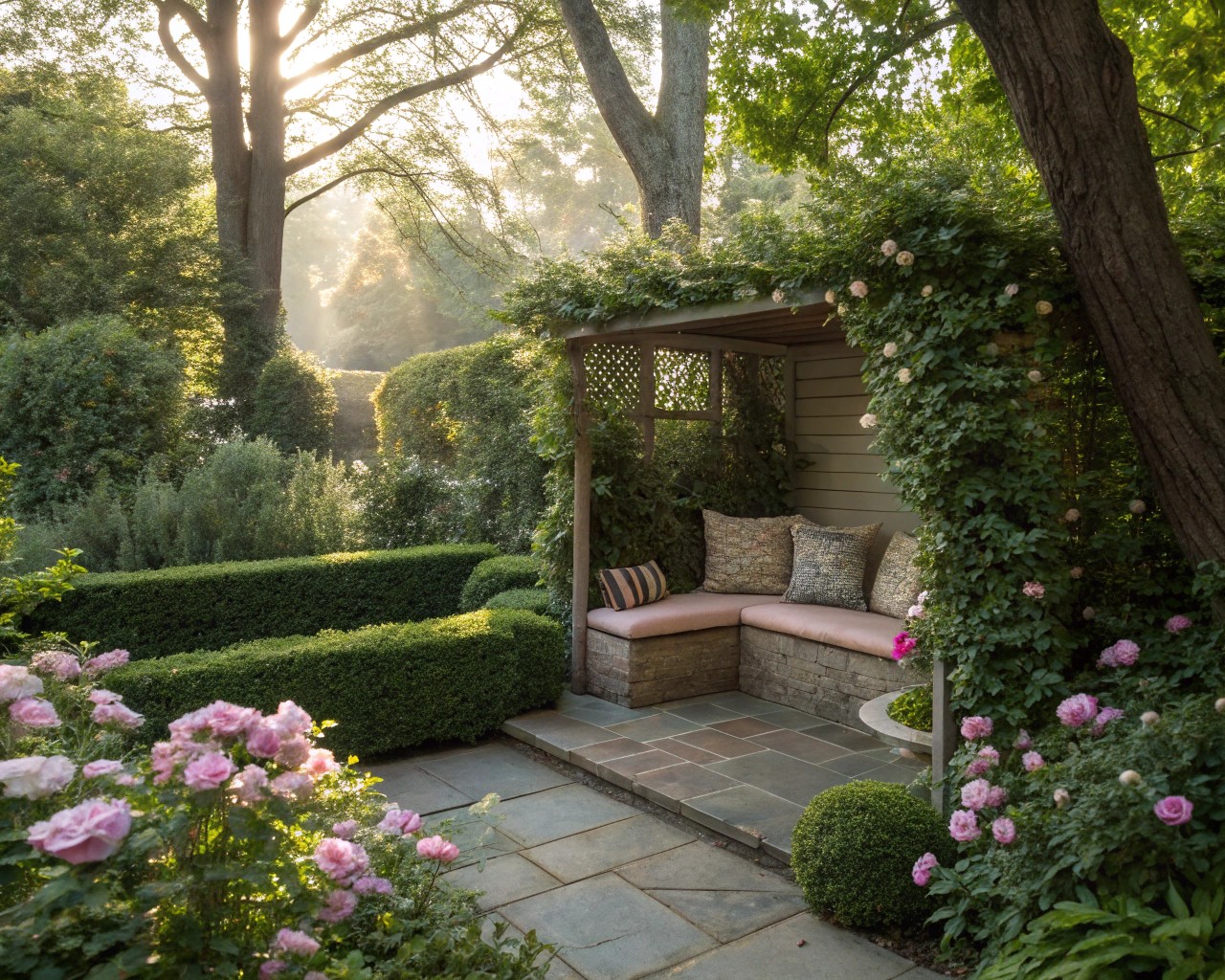
Every teen needs access to spaces for emotional regulation and solitary activities. These areas should feel separated from the main social zones while remaining visually connected to the larger garden. Natural screening through strategic plantings, decorative panels, or even simple fabric screens can create the sense of enclosure that makes these spaces psychologically restorative.
The most effective quiet zones incorporate multiple sensory elements: soft textures through cushions or throws, gentle sounds from water features or wind chimes, and engaging but not overwhelming visual elements. A simple reading nook with weather-resistant cushions and a small side table can become a treasured retreat for journaling, homework, or simply processing the day’s experiences.
Activity and Maker Areas
Teenagers thrive when given opportunities for creative expression and hands-on learning. Dedicated spaces for projects, games, or artistic endeavors should be designed with mess and experimentation in mind. This might include:
- Maker stations with sturdy work surfaces and nearby storage for tools and materials
- Art areas with easels, chalkboard surfaces, or simply clear wall space for temporary installations
- Garden plots where teens can grow food, flowers, or experimental plants
- Game zones with level surfaces suitable for everything from board games to casual sports
These areas benefit from proximity to water sources and electrical outlets, allowing for both project cleanup and power tool use as appropriate.
Technology Integration
Rather than fighting the digital age, successful teen spaces embrace technology as a tool for connection and creativity. This integration should feel natural rather than forced, supporting rather than dominating the outdoor experience.
Key elements include:
- Outdoor power outlets positioned strategically for device charging
- Wi-Fi coverage extending to primary use areas
- Weather-protected surfaces suitable for devices
- Lighting designed for screen use while maintaining ambient outdoor atmosphere
The goal is enabling teens to share their outdoor experiences digitally while encouraging them to remain present in the physical space.
Lighting Solutions
Proper lighting extends the usability of teen outdoor spaces well into evening hours. Unlike task-oriented adult lighting, teen spaces benefit from atmospheric illumination that creates mood and ambiance. String lights remain popular for their warm, festive quality, while solar-powered path lights provide safety without harsh brightness.
Lighting should serve multiple functions:
- Safety illumination for pathways and level changes
- Task lighting for reading, studying, or project work
- Ambient lighting for socializing and relaxation
- Security lighting that doesn’t feel intrusive
Layered lighting approaches work best, combining overhead string lights with lower-level path lighting and focused task lighting where needed.
Privacy and Screening
Privacy needs vary significantly among teenagers, requiring flexible solutions that can be adjusted as needed. Living screens through strategic plantings offer the most natural approach, but require time to establish. Immediate privacy can be achieved through:
- Decorative panels that can be repositioned as needs change
- Pergolas with climbing plants that provide overhead coverage while maintaining openness
- Portable screens that can be moved or removed entirely
- Strategic furniture placement that creates intimate conversation areas
The key is creating perceived privacy rather than complete isolation, allowing teens to feel separate from adult supervision while remaining within safe boundaries.
Let Them Lead: Participatory Design Process
Why Teen Involvement Matters
Research consistently demonstrates that teenagers show significantly greater investment in spaces they’ve helped create. Studies of participatory design projects reveal that teen involvement in planning and construction develops what researchers call “collective efficacy”—a confidence in their ability to improve their environment that extends far beyond the immediate project.
This involvement must be authentic rather than tokenistic. Teens can immediately distinguish between meaningful participation and adult-directed activities disguised as collaboration. True participation means involving teenagers in:
- Initial visioning and goal-setting for the space
- Design decisions about layout, materials, and features
- Actual construction where age-appropriate and safe
- Ongoing maintenance and adaptation as needs evolve
Conducting Effective Design Sessions
Successful teen design sessions require different approaches than adult-focused meetings. Teenagers respond well to visual and hands-on activities rather than abstract discussions. Effective techniques include:
- Site walks where teens identify problems and opportunities in real-time
- Mood boarding using images to communicate desired atmospheres
- Scale model building allowing physical manipulation of design elements
- Photo documentation of existing conditions and preferred examples
Keep sessions focused and time-limited—teenagers have shorter attention spans for planning activities but high engagement when the content feels relevant to their lives.
Building Ownership Through DIY Projects
Hands-on construction projects create the deepest sense of ownership while building valuable skills. Teen-appropriate projects should balance skill development with achievable outcomes. Successful projects often include:
Weekend Projects:
- Building simple bench seating using basic lumber and hardware
- Creating raised planter boxes for herbs or vegetables
- Installing string lighting or solar-powered path lights
- Constructing simple fire pit areas with stone or brick
Seasonal Improvements:
- Planting seasonal gardens with annuals and perennials
- Building temporary shade structures for summer use
- Creating outdoor art installations that can weather seasons
- Establishing composting systems for garden waste
Long-term Installations:
- Constructing pergolas or more permanent shade structures
- Building integrated seating with storage capabilities
- Installing water features or irrigation systems
- Creating dedicated maker spaces with tool storage
The key is scaling project complexity to match both skill levels and available supervision.
Maintaining Long-term Engagement
Teen interest in outdoor spaces naturally fluctuates with seasons, social dynamics, and individual development. Successful spaces anticipate this variability and build in opportunities for renewal and adaptation. This might include:
- Seasonal refresh projects that update colors, plants, or arrangements
- Friend group integration that welcomes new social connections
- Skill building progression that offers increasingly complex projects
- Ownership transition as teens age and younger siblings become involved
I’ve observed that spaces requiring regular maintenance—such as gardens or food production areas—tend to maintain teen engagement better than static installations.
Practical Project Ideas
Quick Weekend Projects
DIY Outdoor Seating Areas
Creating comfortable seating doesn’t require extensive carpentry skills. Simple platforms built from pressure-treated lumber and topped with weather-resistant cushions provide flexible gathering spaces. A basic 8×8 foot platform using 2×8 framing and 5/4 deck boards can be completed in a weekend and costs under $200 in materials.
String Light Installation
Properly installed string lights transform any outdoor space into an evening destination. Use heavy-duty outdoor extension cords, weatherproof connections, and sturdy mounting points. Solar-powered options reduce electrical complexity while providing sustainable operation.
Raised Garden Beds
Simple raised beds using cedar or composite lumber allow teens to grow food, herbs, or flowers while defining garden zones. A 4×8 foot bed requires minimal tools and can be completed in a few hours.
Seasonal Improvements
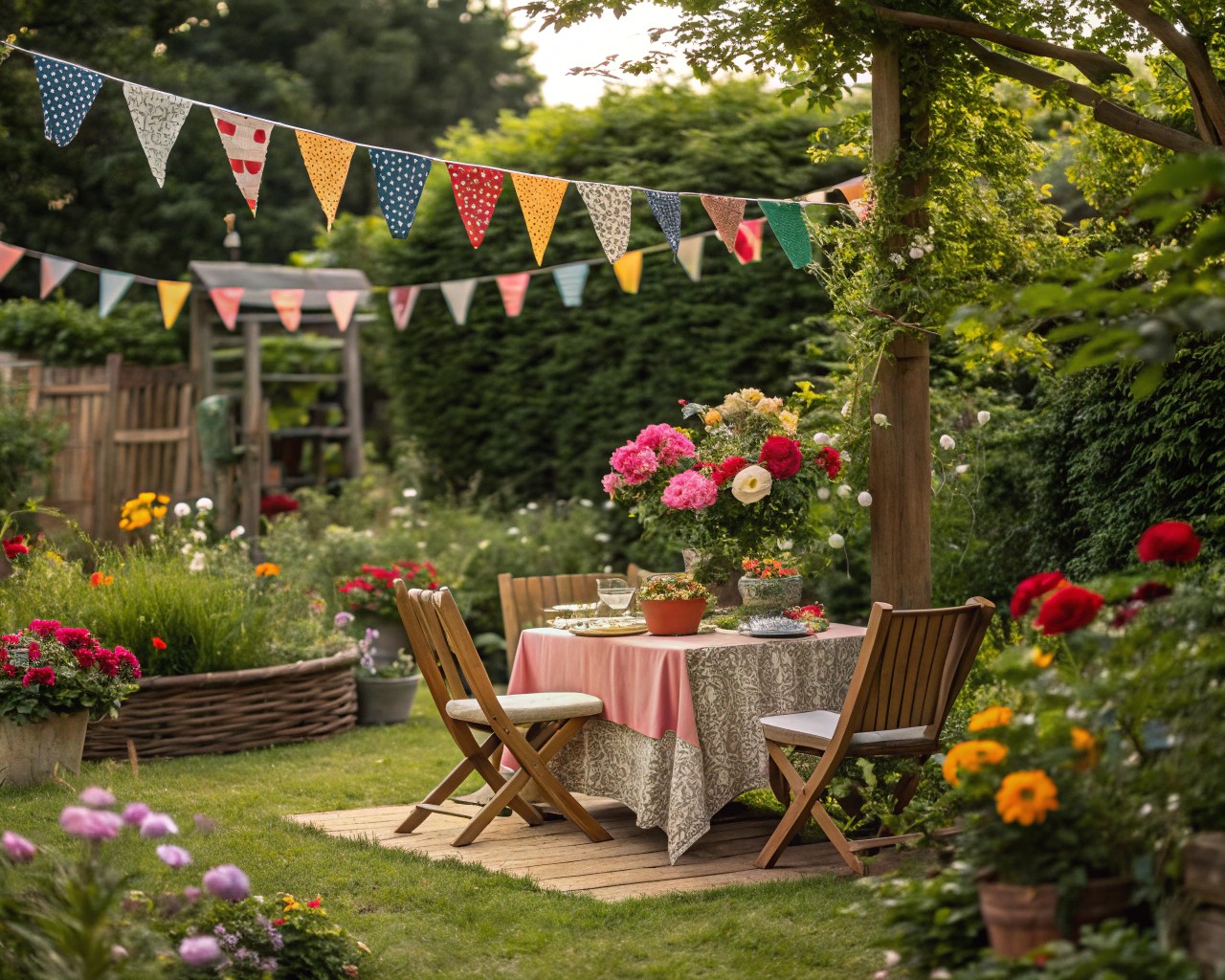
Spring Setup
– Plant annual flowers and vegetables in established beds
– Install temporary shade structures for summer comfort
– Set up outdoor furniture after winter storage
– Establish new seating areas with portable furniture
Summer Maintenance
– Install additional shade features as needed
– Create cooling elements through misters or water features
– Establish outdoor cooking areas for teen social gatherings
– Add evening lighting for extended use
Fall Preparation
– Plant bulbs and perennials for next season
– Harvest and process garden produce
– Create storage solutions for outdoor gear
– Establish weather protection for sensitive elements
Winter Adaptation
– Install heating elements for cold-weather use
– Create covered areas for all-weather activities
– Establish indoor-outdoor connections for year-round flow
– Plan and design improvements for next season
Long-term Installations
Pergola Construction
A well-built pergola provides structure for climbing plants while creating defined outdoor rooms. Basic post-and-beam construction using pressure-treated lumber creates durable shade structures that improve with age.
Integrated Fire Features
Permanent fire pits or fire tables create focal points for social gatherings while extending the usable season. Proper installation requires attention to safety clearances and local regulations.
Outdoor Kitchen Elements
Simple outdoor kitchens—even just a prep counter and storage—enable teens to prepare food independently while socializing. This might include built-in coolers, prep surfaces, and storage for cooking equipment.
Budget-Friendly Solutions
Upcycled Materials
Pallets, reclaimed lumber, and repurposed furniture can create unique outdoor elements at minimal cost. Tire planters, pallet furniture, and salvaged materials offer opportunities for creative expression while reducing expenses.
Phased Development
Rather than attempting comprehensive transformation, develop outdoor spaces in phases that align with available resources. Start with essential elements like seating and lighting, then add features as budget allows.
Community Resource Sharing
Tool libraries, neighborhood material exchanges, and skill-sharing networks can significantly reduce project costs while building community connections.
Plant Selection and Landscape Design
Teen-Preferred Plant Characteristics
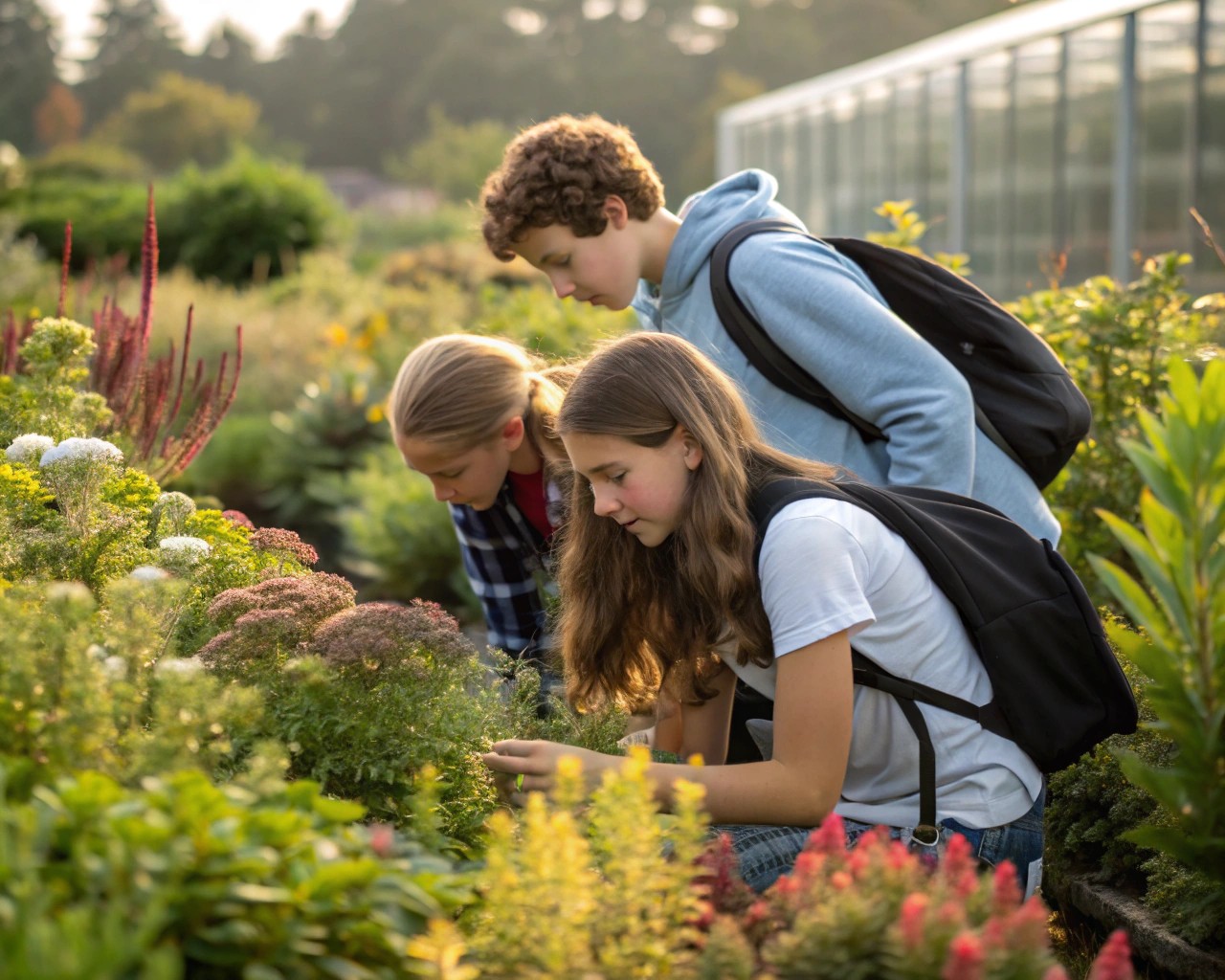
Teenagers gravitate toward plants that offer immediate gratification and sensory engagement. Fast-growing species, plants with interesting textures or fragrances, and those that attract wildlife tend to maintain teen interest better than slow-developing ornamentals.
Preferred characteristics include:
- Rapid growth that provides quick results
- Interesting textures that invite touching
- Fragrant flowers or foliage that engages multiple senses
- Seasonal interest through flowers, fruits, or fall color
- Wildlife attraction through nectar, berries, or nesting sites
Creating Natural Privacy Screens
Living screens offer the most natural approach to privacy while providing opportunities for teen involvement in plant selection and care. Fast-growing species like bamboo, ornamental grasses, or vine-covered trellises can establish visual barriers within a single growing season.
Effective privacy plants for teen spaces:
- Bamboo for rapid screening and interesting movement
- Ornamental grasses for soft textures and seasonal change
- Climbing vines on trellises for vertical interest
- Evergreen shrubs for year-round privacy
- Flowering hedges that provide beauty with function
Edible Landscaping for Teens
Food production adds practical value to teen spaces while teaching valuable life skills. Herb gardens, berry bushes, and vegetable plots offer immediate rewards while connecting teens to natural cycles.
Teen-friendly edible plants include:
- Herbs like basil, mint, and rosemary for immediate use
- Cherry tomatoes and peppers for continuous harvest
- Berry bushes for seasonal treats and wildlife habitat
- Fruit trees for long-term investment and shade
- Edible flowers like nasturtiums and violets for visual interest
Low-Maintenance Options
Busy teenagers need plants that thrive with minimal care. Native species, drought-tolerant plants, and those adapted to local conditions reduce maintenance while supporting local ecosystems.
Selection criteria should prioritize:
- Native plants adapted to local conditions
- Drought tolerance for reduced watering needs
- Disease resistance to minimize chemical interventions
- Appropriate mature size to prevent overgrowth issues
- Seasonal interest to maintain visual appeal year-round
Safety and Maintenance
Material Selection and Durability
Teen spaces experience heavy use and require materials that can withstand both weather and activity. Pressure-treated lumber, composite decking, and powder-coated metal hardware provide durability while remaining cost-effective.
Key considerations include:
- Weather resistance for year-round exposure
- Impact resistance for active use
- Stain resistance for easy maintenance
- Slip resistance for safety in wet conditions
- UV stability to prevent fading and degradation
Lighting for Safety
Proper lighting prevents accidents while creating welcoming atmosphere. Path lighting, step illumination, and general area lighting should be layered to provide safety without harsh brightness.
Essential lighting zones:
- Pathway lighting for safe navigation
- Step and level change illumination to prevent falls
- General area lighting for activities and socializing
- Security lighting that doesn’t feel intrusive
- Emergency lighting for power outages or equipment failure
Weather Protection
Outdoor spaces must function across seasons and weather conditions. Proper drainage, wind protection, and material selection ensure year-round usability.
Weather considerations include:
- Drainage to prevent water accumulation
- Wind protection through strategic plantings or structures
- Sun protection via shade structures or plant screening
- Cold weather adaptation for extended seasonal use
- Storage solutions for seasonal equipment and furniture
Ongoing Care and Adaptation
Teen spaces evolve constantly as users mature and interests change. Build in flexibility for modifications while establishing maintenance routines that keep spaces functional and attractive.
Maintenance strategies:
- Seasonal inspection and repair schedules
- Plant care routines that involve teen users
- Furniture maintenance to extend lifespan
- Safety checks for structural elements
- Adaptation planning for changing needs
Creating Spaces That Grow with Them
The most successful teen outdoor spaces acknowledge that adolescence is a time of rapid change and growth. By involving teenagers in authentic design processes, selecting flexible materials and layouts, and building in opportunities for ongoing adaptation, we create environments that truly serve their developmental needs while fostering long-term environmental stewardship.
Remember that the goal isn’t perfection—it’s creating spaces where teens feel ownership, agency, and connection to their environment. When we let them take the lead, we’re not just designing gardens; we’re nurturing the next generation of environmental stewards and confident adults who understand their power to shape the world around them.
The investment in teen-friendly outdoor spaces pays dividends far beyond the immediate benefits. These environments become the foundation for lifelong relationships with nature, developed skills in planning and construction, and the confidence that comes from successfully creating something meaningful. As landscape professionals, our role is to guide and support, but ultimately to step back and watch as young people transform not just their gardens, but themselves.

